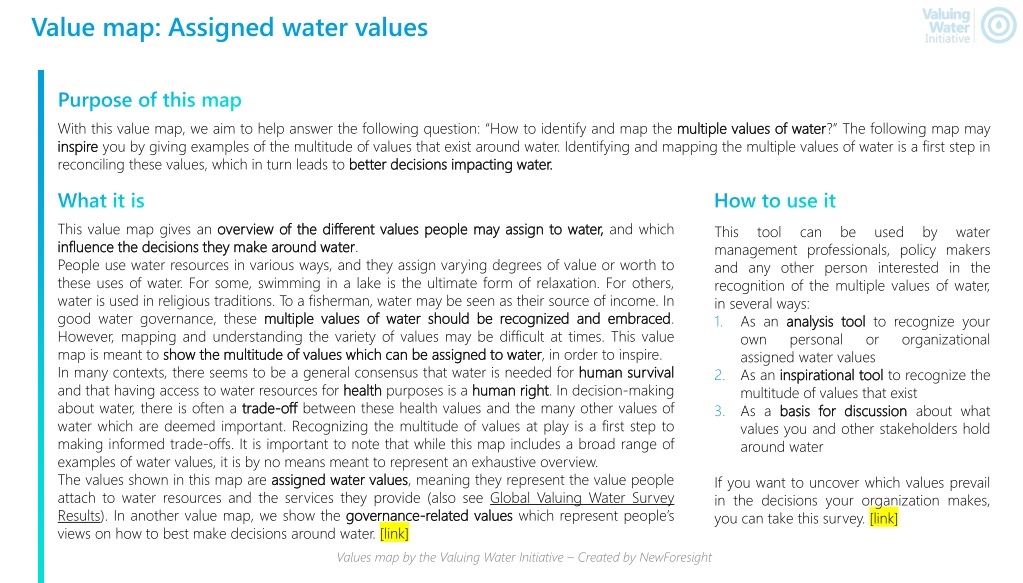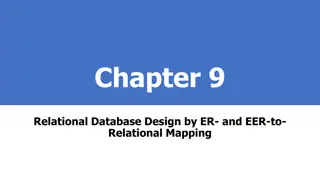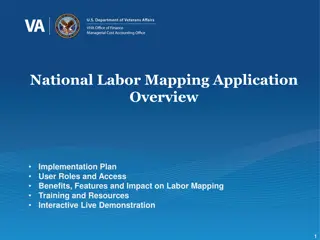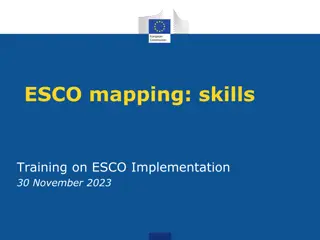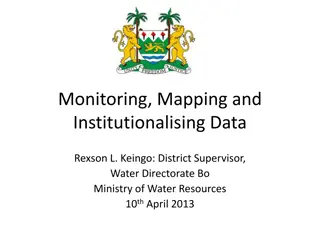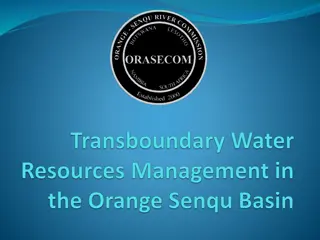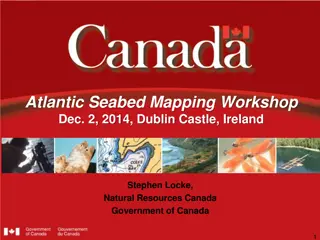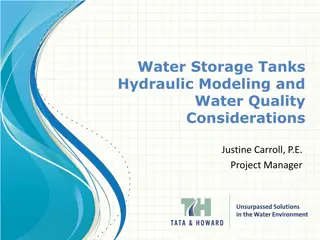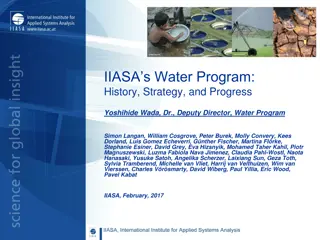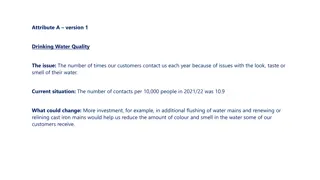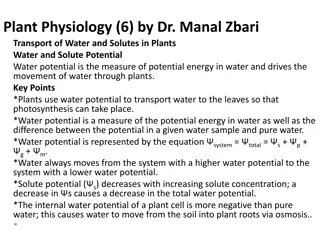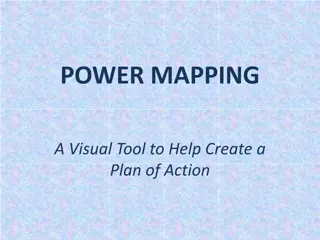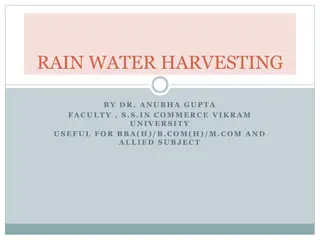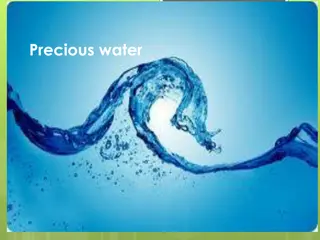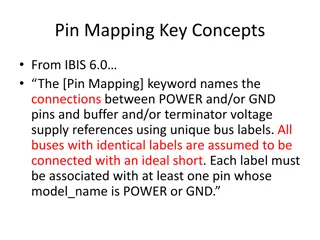and Mapping the Multiple Values of Water
This content explores the multitude of values assigned to water, ranging from economic and cultural significance to environmental and spiritual importance. It emphasizes the importance of recognizing and mapping these diverse values to make informed decisions regarding water governance. The provided value map serves as a tool for individuals and organizations to identify, discuss, and embrace the various values associated with water resources.
Download Presentation

Please find below an Image/Link to download the presentation.
The content on the website is provided AS IS for your information and personal use only. It may not be sold, licensed, or shared on other websites without obtaining consent from the author. Download presentation by click this link. If you encounter any issues during the download, it is possible that the publisher has removed the file from their server.
E N D
Presentation Transcript
Value map: Assigned water values Purpose of this map With this value map, we aim to help answer the following question: How to identify and map the multiple inspire inspire you by giving examples of the multitude of values that exist around water. Identifying and mapping the multiple values of water is a first step in reconciling these values, which in turn leads to better better decisions decisions impacting impacting water water. . multiple values values of of water water? The following map may What it is How to use it This value map gives an overview influence influence the the decisions decisions they People use water resources in various ways, and they assign varying degrees of value or worth to these uses of water. For some, swimming in a lake is the ultimate form of relaxation. For others, water is used in religious traditions. To a fisherman, water may be seen as their source of income. In good water governance, these multiple multiple values values of of water However, mapping and understanding the variety of values may be difficult at times. This value map is meant to show show the the multitude multitude of of values values which which can In many contexts, there seems to be a general consensus that water is needed for human and that having access to water resources for health health purposes is a human about water, there is often a trade trade- -off off between these health values and the many other values of water which are deemed important. Recognizing the multitude of values at play is a first step to making informed trade-offs. It is important to note that while this map includes a broad range of examples of water values, it is by no means meant to represent an exhaustive overview. The values shown in this map are assigned assigned water water values attach to water resources and the services they provide (also see Global Valuing Water Survey Results). In another value map, we show the governance governance- -related views on how to best make decisions around water. [link] Values map by the Valuing Water Initiative Created by NewForesight overview of of the they make make around the different different values around water water. values people people may may assign assign to to water, water, and which This management professionals, policy makers and any other person interested in the recognition of the multiple values of water, in several ways: 1. As an analysis analysis tool tool to recognize your own personal assigned water values 2. As an inspirational inspirational tool multitude of values that exist 3. As a basis basis for for discussion discussion about what values you and other stakeholders hold around water tool can be used by water water should should be be recognized recognized and and embraced embraced. or organizational can be be assigned assigned to to water water, in order to inspire. human survival human right right. In decision-making survival tool to recognize the values, meaning they represent the value people If you want to uncover which values prevail in the decisions your organization makes, you can take this survey. [link] related values values which represent people s
Value map: Assigned water values Water shapes our identity and who we are Water is an asset for economic development Identity Identity Development Development Economic Economic values values Cultural Cultural values values Water is a place of beauty Water is the basis for agricultural production Aesthetics Aesthetics Agriculture Agriculture Water serves as a site for spirituality and cultural traditions Spirituality Spirituality Water is the basis for industrial production Industry Industry Water is a place for recreation and leisure Recreation Recreation Water is a source for renewable hydroelectric energy production Energy Energy Water is a means of transportation Transport Transport What values What values may different may different stakeholders stakeholders assign to assign to water? water? Water is a source of livelihoods to people (in rural communities) Livelihood Livelihood Water is used for drinking directly or as an input for other drinks Drinking Drinking Water helps support natural environments Nature Nature Health values Health values Environmental Environmental values values Water is used for sanitation and hygiene WASH WASH Water provides a habitat for aquatic animals and plants Habitat Habitat Water has medicinal or healing power Healing Healing Water ensures wildlife survival Wildlife Wildlife Fill out Fill out
Value map: Assigned water values Clusters of values Levels at which values are held Environmental Environmental values values Health Health values values Economic Economic values values The values people assign to water can be identified on a personal, personal, organization and and structural structural level level. On a personal level, each individual holds certain water values. Within an organization, certain values prevail and influence the decisions made in that organization. The structural level is about the values we collectively Cultural values Cultural values organization People tend to think about assigned economic values, environmental values, health values and cultural values which are also represented in the value map. The distinction between these value clusters may help to better understand understand the variety of values around water. This is important because these values (clusters) influence influence how make make decisions decisions about about water water. Cultural Cultural values values are those which can be tied to the importance of water to people in societies and cultures, such as spirituality and recreation. Economic Economic values values represent the value of water as economic good, for instance as input for production. Environmental Environmental values inherent value water has for nature, including plants, animals and entire ecosystems. Health Health values values are those which contribute to human health, such as decreasing the spread of disease with hygiene. While grounded in research, the value clusters in this tool may not be exhaustive. Some of the values represented in this value map may another, for instance when water is over-extracted to be used as input for production and it function to support natural ecosystems declines. Some values may may also also overlap overlap with each other, for instance when water is used in agriculture it has value as an input for production but also for people s livelihoods. Usually, people make decisions around water based on multiple multiple of of these these values values. Certain values or a particular cluster of values may however prevail. assigned water water values values in terms of clusters of better recognize recognize and and how people people and and organizations organizations hold as a society and which are embedded in policies, laws, institutions, and social norms. If a certain set of values prevails on a structural level, we call this the dominant dominant value value paradigm paradigm. These three three levels levels are are interrelated interrelated. If many people in an organization hold a certain value, there is a higher likelihood of this value becoming embedded in the organization. Actions taken by the people in that organization likely will reflect these values. If many individuals and/or organizations in a certain society hold a particular set of values, then it may become the dominant value paradigm on a structural level. This works the other way around as well. Organizational and individual values may be influenced by the dominant value paradigm. Particularly on an organizational level, adhering to the values which are structurally embedded in society may be beneficial to the organization. Additionally, if certain values prevail in an organization, individuals working at or associated with that organization may adopt some of these values. values constitute the may conflict conflict with one
Value map: Assigned water values Ways to use the value clusters To learn more The value maps may be used to read for inspiration around water, as a basis for analysis as a basis for discussion discussion on what values prevail for you and other stakeholders. Such analyses may be conducted, or discussions may be held, in various ways: Personal Personal values values: Think about or discuss which values you and other stakeholders hold towards water on an individual level. Organizational Organizational values values: Think about or discuss which values your organization and other organizations hold towards water. Structural Structural values values: Think about or discuss which values prevail on a structural level or what the dominant value paradigm is. Internal Internal discussion discussion: Have a discussion about personal, organizational and/or structural values with stakeholders within your own organization. External External discussion discussion: Have a discussion about personal, organizational and/or structural values with stakeholders from other organizations in a shared water system. inspiration on the multiple values analysis to recognize values in a certain context, or If you are interested in incorporating a values perspective into decision-making processes around water or seek facilitation for a conversation or workshop on the values of water, please contact the Valuing Water Initiative team at vwi@rvo.nl Final notes This value map and value clusters are based on the results of the Global Valuing Water Survey. If you want to contribute to academic research on the multiple values of water, we kindly ask you to fill in this survey. The values and clusters represented in this value map are meant to inspire you to think about the multitude of values which influence decision-making, but in no way is it meant to represent an exhaustive overview of values or prescriptive categorization. You or other stakeholders may have different views on the values of water. These ways of talking about values can also be combined may want to have a conversation about your and others personal values towards water and how they relate to the organizational values which your organizations hold. Discussions on values can be held in various conversation or a workshop. We recommend to start with an open question or empty values map, to give room to stakeholders to think about their own values. After doing this, the value map can be used for inspiration. combined. For instance, you various settings settings, such as an open Values map by the Valuing Water Initiative Created by NewForesight
